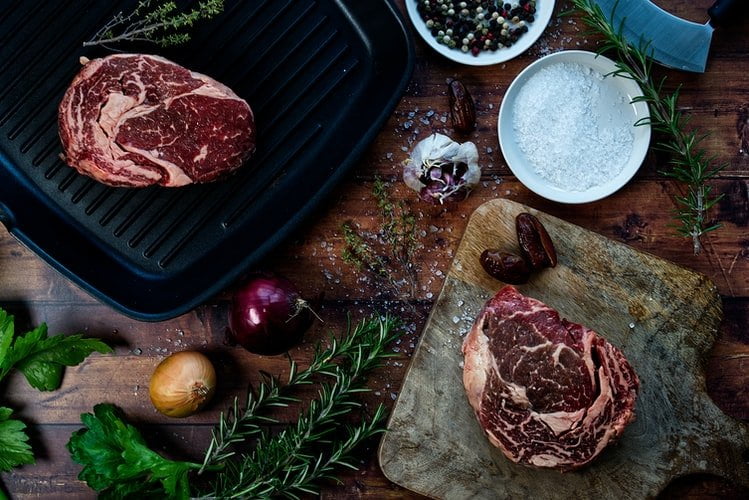Meat and other animal proteins are unquestionably acceptable as part of a balanced diet. Red meat is an excellent source of complete protein and is high in vitamins B6 and B12, as well as iron, selenium, and zinc.

However, how you cook meat and other animal proteins such as poultry and fish is critical, as certain common practices may degrade the nutritional value of this otherwise healthy food. Here are some cooking dos and don’ts to help you enjoy meat in a healthy, delicious manner.
Keep An Eye On The Heat
When animal proteins are cooked at high temperatures, such as through direct grilling or pan frying, the chemical compounds heterocyclic amines (HCAs) and polycyclic aromatic hydrocarbons (PCAs) form. These compounds may increase the risk of developing cancer1 (though the research so far has been on animals). 2 Avoiding these compounds by grilling over indirect heat or pan-frying at lower temperatures are two methods.
Grill Slightly Thinner Cuts
PCAs are also formed when meat comes into contact with smoke, which can occur when fat drips into a grill and flames flare up. Less fat drips off leaner cuts, reducing the risk of fire and smoke. Additionally, you can raise the grill grate to keep food away from the heat source.
Steer Clear of Well-Done Meat
Most food enthusiasts will tell you never to eat well-done meat because the texture and flavor are compromised—and it turns out that this is also good health advice. According to research, well-done meat may pose a greater risk of cancer (all the more reason to reach for that medium-rare steak or burger). 3
Utilize Alternative Cooking Techniques
Using low-temperature cooking techniques such as braising and air frying can help keep temperatures down. Braised meats, such as pulled pork and shredded beef, are cooked in liquid at a temperature of around 300oF. Braise in a slow cooker, a Dutch oven, or on the stovetop or in the oven. With an air fryer, you can achieve a nice, crisp texture on items like chicken wings without using high temperatures or excessive oil.
Consider A Reverse Sear
Meat, particularly roasts and other large cuts, is frequently seared in a hot skillet and then finished in the oven. However, with a reverse sear, you first cook the meat at a low heat setting in the oven, until it reaches a temperature about 10 to 15oF lower than the final temperature you’re aiming for. Then you sear it quickly on the stovetop. As a result, the crust remains on the outside and the meat remains tender on the inside, but the meat is cooked in a high-heat pan for a fraction of the time.
Utilize Spices
According to research, meat that has been seasoned or marinated in antioxidant-rich spices such as rosemary, thyme, oregano, and pepper can help reduce the amount of HCAs in the meat.
These spices enhance flavor and can help keep potentially harmful compounds at bay, making them a win-win situation.
Select Grass-Fed
Consider purchasing beef that is 100 percent grass-fed and grass-finished. According to research, it contains more omega-3 fatty acids, vitamins E and A, and antioxidants such as the disease fighter glutathione. 5 To maximize nutrient density, look for beef that is both grass-fed and finished on grass.
Additionally, shop at stores and brands you trust; while there is no government certification for grass-fed beef (as there is for organic), you can look for the American Grassfed Association’s logo for some oversight.
If the price of grass-fed meat in stores is prohibitively high, consider purchasing it online from purveyors such as ButcherBox, Porter Road, or US Wellness Meats.
A Message From Verywell
While meat can be an excellent source of iron-rich protein for some, we recognize that not everyone’s ethical, lifestyle, or dietary choices include meat. You may be a vegan or a vegetarian, or you may choose to abstain from meat for health reasons. There are numerous plant-based, whole-food alternatives available.
If you choose to consume meat, we recommend that you be mindful of portion sizes and quality. Certain methods of meat production can be detrimental to animals and the environment, so choosing higher-quality, grass-fed beef may have benefits beyond nutrition.

